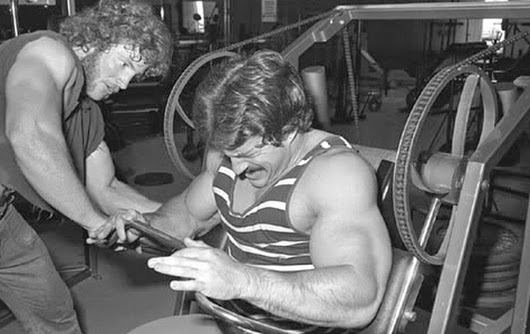How important is exercise for health?
We all know that exercise is good for us. But just how good, and how much exercise do we need to be healthy? Exercise capacity powerfully predicts survival.
A just-published study in Heart quantifies the healthfulness of exercise in terms of reduction of the death rate, and compares it to chronological age as a predictor of mortality and survival.(1)
The study looked at over 57,000 people, median age 53, who had performed treadmill stress tests, which test exercise capacity. It then followed them for ~10 years for all-cause mortality, and ~5 years for myocardial infarction (heart attack).
Biological age, as determined by exercise capacity, varied widely, up to three decades within each decile of chronological age.
In other words, one person who was 50 years old and had a high exercise capacity might show a biological age of 35, another with low exercise capacity a biological age of 65.
The study found:
Higher exercise capacity was strongly associated with greater survival, with per-MET HR ranging from 0.82 in patients under 40 years of age, to 0.88 in those over 70 years of age. Biologic age varied markedly—up to three decades—within each age decile, and was a stronger predictor of mortality and MI than chronologic age.
Metabolic equivalent units: what they are and why they’re important
METs are metabolic equivalent units, a measure of exercise capacity. One MET is equivalent to the amount of energy expended by sitting quietly. The following table shows some sample activities and how they relate to METs.
According to the study, each incremental MET of exercise capacity was associated with an 18% reduction in risk of death in those under 40, and a 12% reduction in those over 70.
Presumably just about everyone could perform activities at about 2 METs, “walking, level ground, strolling, very slow”. So compared to that person, someone who can vigorously jump rope would have a much lower risk of death, a small fraction of the risk compared to a sedentary person.
Another example would be a person who could perform vigorous calisthenics at a MET of 8.0, vs someone who can perform jogging, at a MET of 7.0. If under age 40, the one doing calisthenics has a risk of death 18% less than the jogger; if over 70, the risk is 12% less.
Note that exercise intensity is key, which is one reason that high-intensity training is so effective and better for health than aerobics.
This study confirms the results of another study that I wrote about: How to live until 90. It’s worth repeating a sentence from that previous study:
The prognostic importance of these factors greatly exceeded that of common prevalent diseases such as diabetes, hypertension, asthma, and angina pectoris/previous MI as well as that of conventional risk factors such as smoking, high BP, high level of TC, low level of HDL-c and obesity.
Exercise capacity as a factor in survival to old age was much more important than cholesterol, blood pressure or even a previous heart attack.
How to live until age 90
Here’s a chart that shows the survival curves for men (left side) based on low vs high exercise capacity between the ages of 75 and 90. By age 90, twice the number of men with high exercise capacity were alive compared to those with low. Since this was a simple dichotomy, high vs low, I would expect to see even more dramatic results in men who have a top level capacity for exercise.

Conclusion
Exercise capacity appears to be the single strongest predictor of survival, better than cholesterol, HDL, blood pressure, diabetes, or even angina pectoris (chest pain).
If you don’t exercise, you deteriorate.













9 Comments
I’ve always heard jumping rope is good exercise, but can’t believe it’s that good. Guess I’d better start.
I do it myself as part of my HIT routine. First set of one minute isn’t too tough, but they get increasingly harder. Half a dozen sets will leave you winded for sure.
Great article, and all the more powerful considering such a large sample size.
And that’s not to mention living well in addition to living long. Life is just so much better when you’re in shape and have high exercise capacity. Too many benefits to even try and list them all here.
I let myself go once and the difference in quality of life was night and day. Never again. I’ll keep working out however I can until I drop dead.
Thanks, Pete. Yes, the sample size is impressive. Of course I completely agree about quality of life; exercise is such an important part of it that it will be the last to go.
Heartiste / Roissy tweeted something to Dennis to the following effect (it may have been deleted already): “The negatives of iron overload are so numerous that the few positives must have been important for reproductive fitness.”
My sense is that the response to this is, over the course of our evolutionary development, most “reproductive fitness” mattered at what we would today consider low ages: say 15 to 27. Average life expectancy in the paleolithic was very low, in the 30s. So I don’t think “iron overload” was a fitness factor at all. It is in fact more a modern problem since we live so long.
Hi Daniel, yes, reproductive fitness is what matters, and our bodies have this as an objective, not surviving in old age. Iron overload is just a natural consequence of the drive for fitness combined with living longer. Hemochromatosis is probably around because in former times its carriers had increased fitness, as they were able to grab more iron from the environment. A woman who did this, for example, would have a much better chance of having more and healthier children, as well as a better chance of surviving childbirth.
Of course I completely agree with you about the healthiness of exercise. But there is a slight problem with your analysis, which is that (AFAIK) when you calculate exercise capacity in METs, the person’s body weight is in the denominator. So a fat person’s exercise capacity will be a good deal lower even if he exercises regularly.
The upshot of this is that (I suspect) the study was partly picking up the negative health effects of excess adiposity.
Ultimately this doesn’t matter a lot since it’s pretty much common knowledge and common sense that regular exercise and staying at a healthy weight are both important ingredients to increasing your expected lifespan. It’s just difficult to disentangle these things for research purposes.
In any event, your data pretty much confirms my intuition that if you eat carefully and stay in shape you can buy yourself perhaps 5 extra years of life, give or take. And probably more than that in terms of healthspan, i.e. the number of years where you are mobile and coherent. Which is makes it a great investment but it’s still a bit depressing. As Rutger Hauer said in Blade Runner, “I want more life, fucker.”
Body weight is important in calculating values for walking and running, but for others like stationary cycling it would seem less important. But as far as I can see the effect is the opposite of what you describe: body weight is in the numerator, e.g. if you go running, you have to expend more energy with greater body weight. If I’m understanding this correctly.
I agree that it seems like an absurdly large amount of effort goes into getting just a few more years of life. Given the state of the art, for now I think we should be doing it to avoid ill health in old age, less so for life extension.
“body weight is in the numerator, e.g. if you go running, you have to expend more energy with greater body weight. ”
You have to expend more energy to go at some given speed yes. But in the formula for exercise capacity, the energy expended (per unit time) is in the numerator and body weight is in the denominator. Of course having extra unneeded fat on your body is not going to increase the amount of power your body can produce in an exercise test. But it will reduce the calculated exercise capacity.
Here’s a thought experiment: If I did an exercise test while wearing a 30-pound weight vest, it would not affect the amount of power my body could produce. If the test were done on a treadmill, the speed I could attain would be less; if the test were done on a stationary bike, there would not be much difference in the speed I could attain. But either way, my body would produce basically the same amount of power. Next, if you used that power figure and my weight including the vest to calculate my exercise capacity, the result would be lower. Even though my body is producing the same amount of power as without the vest.
Exercising with extra fat is like doing so with a weight vest. It does not help you produce power but it reduces your exercise capacity. (Actually it’s probably a bit worse than that since extra fat requires extra pumping from your heart.)
“Given the state of the art, for now I think we should be doing it to avoid ill health in old age, less so for life extension.”
Yes, I think everyone’s goal is to improve their healthspan, i.e. the number of years of life with reasonable mobility and mental coherence. Total life expectancy is a rough proxy for healthspan. And of course is easier to measure.